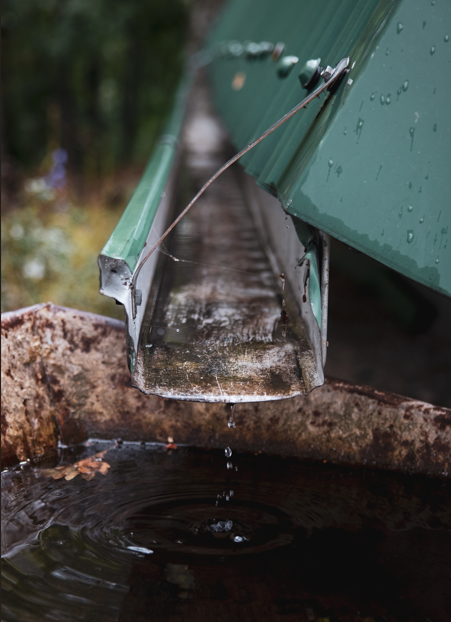Diverting water away from your home’s foundation is an important task that can prevent costly damage and structural issues! It is also crucial in order to maintain a healthy landscape and to prevent water accumulation, resulting in water intrusion in some cases.
When water isn’t properly drained away from your home, several serious problems can develop, such as:
Foundation Damage
Water pooling around your foundation can lead to hydrostatic pressure, causing foundation walls to crack, bow, or shift. This pressure can create structural instability throughout your home, leading to uneven floors, stuck doors/windows, and wall cracks.
Basement and Crawl Space Flooding
Excess water naturally seeks the lowest point, often resulting in basement or crawl space flooding. Even without visible flooding, persistent moisture creates ideal conditions for mold growth.
Mold and Mildew Development
Damp conditions promote mold and mildew growth, which can spread throughout your home’s structure. This poses health risks for occupants, particularly those with respiratory issues or allergies.
Deterioration of Building Materials
Constant moisture exposure can rot wooden structural elements, corrode metal components, and degrade concrete and masonry over time.
Soil Erosion
Improper drainage can wash away soil around your foundation, creating voids that compromise structural support.
Pest Infestations
Damp environments attract termites, carpenter ants, and other moisture-loving pests that can cause further damage.
Decreased Property Value
Water damage and its consequences can significantly reduce your home’s value and make it harder to sell.
Higher Energy Bills
Damp basements and crawl spaces make your home harder to heat and cool efficiently.
The longer these issues remain unaddressed, the more extensive and expensive the damage typically becomes, potentially turning from a simple drainage fix into major structural repairs.
Here are some ways in which to help divert water away from your home’s foundation, ultimately protecting you from larger issues as time goes on:
- Ensure proper grading – The soil around your foundation should slope away from your home at a gradient of about 6 inches over 10 feet to naturally channel water away.
- Install or repair gutters and downspouts – Make sure your gutters are clean and functioning properly. Downspouts should extend at least 5-6 feet away from your foundation.
- Add downspout extensions – These inexpensive additions can carry water further from your foundation.
- Install a French drain system – This involves digging a trench filled with gravel and a perforated pipe that collects and redirects water away from your home.
- Consider a dry creek bed – This decorative option creates a natural-looking path for water to follow away from your foundation.
- Install a swale – A shallow, wide depression in your yard can direct water flow away from your home.
- Use window well covers – For basement windows, these prevent water accumulation.
- Apply waterproof foundation coating – This creates a barrier against moisture.
- Check for and repair plumbing leaks promptly – Even small leaks near the foundation can compromise the integrity of any structure. Repair any source of a leak immediately upon finding to mitigate further damage.


Recent Comments